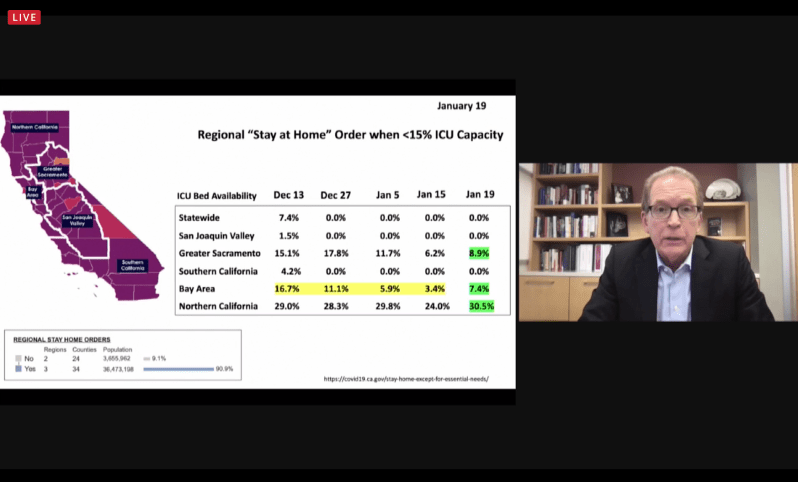School of Medicine Dean Lloyd Minor shared plans for a committee to determine future COVID-19 vaccination priority at Stanford and expressed hope that vaccine roll-out will facilitate a return to some degree of normalcy during Thursday afternoon’s installment of Campus Conversations with Stanford President Marc Tessier-Lavigne and Provost Persis Drell.
Over the past few months, Santa Clara County has seen a spike in positive COVID-19 cases, and Minor said that it is likely that Bay Area counties will remain in the highest risk designation of California until at least February. He added that he and Drell created a committee with staff and faculty representation that will meet on a weekly basis to discuss vaccine distribution for Stanford affiliates. Minor explained that the University is currently following distribution guidelines from Santa Clara County but if they are tasked with prioritization decisions, the committee will be making recommendations.
However, Minor said he is cautiously optimistic as cases begin to level off in the Bay Area and vaccine rollout expands.
“At our peak two and a half weeks ago, we had 127 people affected by COVID-19 hospitalized at Stanford Hospital,” Minor said. “Today we have 85 with 37 of those in the ICU.”
Based on current county policies, the distribution of vaccines would fall to provider organizations such as Kaiser Permanente, not employers like the University, according to Minor. Drell added that since Vaden Health Center is the default location for students on campus receive their primary healthcare, it’s possible that vaccine doses for students may be allocated to Vaden at some point; however, the University is not anticipating that allocation will happen before summer.
Drell noted that mandatory COVID-19 vaccine requirements for students would be discussed in the future when there was wider distribution.
Minor thanked the volunteers supporting the vaccine rollout through Stanford Health Care. Addressing the emergence of a new variant strain of COVID-19 in California, “there is at least good theoretical evidence that the vaccine should remain effective against variants, but that’s far from being certain and it’s going to require a lot of vigilance,” Minor said.
Both Tessier-Lavigne and Drell pledged to continue working in open communication with Stanford students about future decisions, such as those regarding spring quarter. While they still plan to bring back juniors and seniors for the spring, Drell stressed that many faculty members will continue to work from home for the next several months and that the promised update in early March could be reversed if public health conditions rapidly decline.
“We know that we are in a challenging time with the surge right now, but we can’t let our guard down, so we hope and believe that a new day and that a better day will be here soon,” Tessier-Lavigne said.
Contact Anuka Mohanpuhr at anuka ‘at’ stanford.edu and Kaushikee Nayudu at knayudu ‘at’ stanford.edu.
